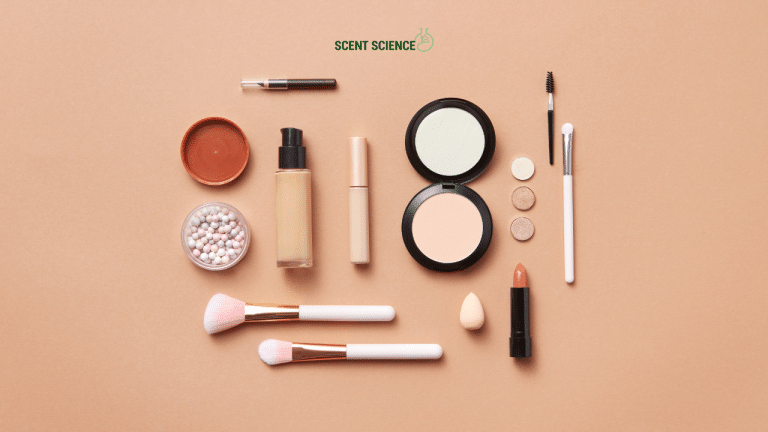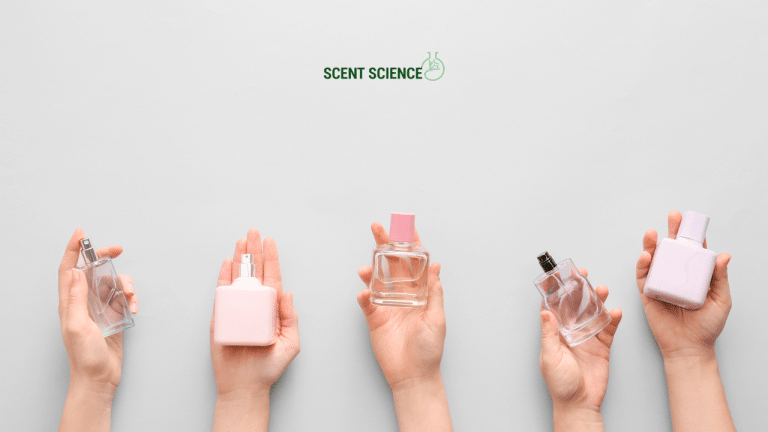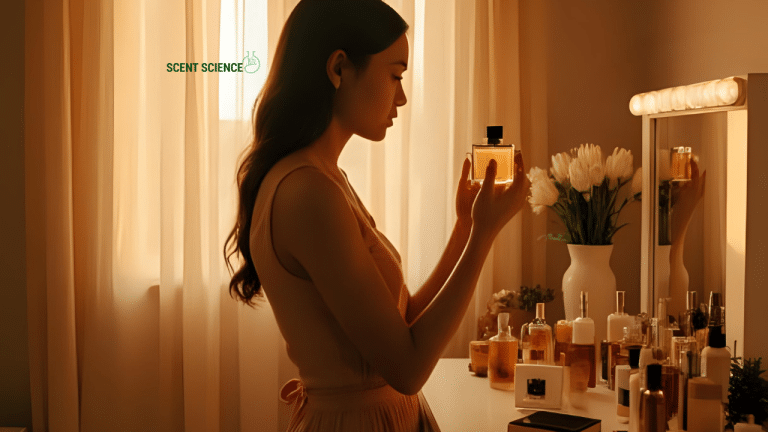In today’s world of personal branding and self-discovery, our fragrance choices subtly yet powerfully communicate who we are. Fragrance, often overlooked as a superficial accessory, serves as an invisible signature that leaves lasting impressions. The scents we choose can reflect our moods, aspirations, and even evoke cherished memories. Welcome to a deep dive into how fragrance can be your tool for self-expression, a powerful medium to communicate your authentic self to the world.
Table of Contents
ToggleUnderstanding the Role of Fragrance in Personal Identity
Fragrance has been a part of human civilization since ancient times. The Egyptians used essential oils in religious ceremonies and personal grooming. Fast forward to modern society, and fragrance continues to be a compelling way to express individuality. But what exactly makes fragrance such a potent tool for self-expression? 🤔
The Psychology Behind Scents
Fragrances affect our brains by triggering emotions and memories connected to our olfactory system. Research has shown that scent is closely linked to memory and emotion, significantly impacting how we perceive ourselves and others. A study published in the “Journal of Neuroscience” found that smells can enhance emotional aspects of a memory more than visual cues. This connection is critical in forming our sense of identity through fragrances.
Scents and Self-Perception
Choosing a fragrance is like creating a canvas that we wear every day. The scent you choose can evoke confidence, calmness, or vitality, affecting not only how others perceive you but also how you view yourself. It becomes part of your personal narrative, reinforcing aspects of your identity or even aiding in the creation of new self-concepts.
Discovering Your Personal Fragrance Identity
Creating your fragrance for self-expression is about understanding yourself and translating that understanding into a scent. Here’s how you can embark on this journey of self-discovery ✨:
1. Recognition of Personality Traits

Identify core attributes that define who you are or who you aspire to be. Are you adventurous, nurturing, introverted, or charismatic? If you consider yourself adventurous, you might be drawn to vibrant, zesty notes like citrus and spices. On the other hand, if you lean towards a more nurturing identity, warm and cozy notes such as vanilla or sandalwood might reflect your personality better.
Practical Exercise:
Create a mood board using images, colors, and words that resonate with your personality. Use this as your guide in identifying scents that match these elements.
2. Understanding Fragrance Families
Fragrances are categorized into families such as Floral, Woody, Fresh, and Oriental. Each family can evoke distinct feelings and memories.
- Floral 🌸: Associated with softness and warmth. Ideal for those who view themselves as elegant and nurturing.
- Woody 🌳: Evokes strength and resilience. Great for individuals who perceive themselves as grounded and stable.
- Fresh 🍃: Conveys vitality and cleanliness, reflecting a lively and dynamic personality.
- Oriental 🕌: Sensual and rich, perfect for sophisticated souls with a passion for exotic experiences.
Do This, Not That:
- Do explore multiple fragrance families.
- Don’t pigeonhole yourself based solely on one type—sometimes the unexpected is the most revealing.
3. Layering Scents
Layering is an art that allows you to create a unique olfactory signature. By blending different fragrance types, you can fine-tune and personalize your scent to reflect deeper aspects of your multifaceted identity.
Actionable Tip:
Experiment with combining a woody base with a floral top note or an oriental note with fresh undertones to see what resonates.

Practical Guide to Selecting and Wearing Fragrance
Once you’ve honed in on the types of scents that call your name, it’s time to narrow down choices and incorporate them into your routine. Here’s how:
Matching Scents with Situations
Even our fragrance choices should adapt to context, aligning with how we wish to present ourselves in various scenarios.
- Workplace Environment: Opt for subtle, clean scents that don’t overwhelm, like light florals or aquatic notes.
- Social Settings: Allow yourself to express bolder elements with spicier or deeper scents.
- Intimate Gatherings: Choose warm, cozy aromas like vanilla or amber to evoke intimacy and comfort.
Expert Tip:
Always test fragrances in real-life settings before committing. How you smell a scent in a store can differ vastly from how it evolves in different environments or in interaction with your skin.
Application Techniques
The way you apply your fragrance can influence its impact.
- Apply scent to pulse points like wrists, neck, and behind the ears where blood circulation helps diffuse the scent.
- “Less is more” when it comes to applications. Start with a small amount and build up if necessary.
Common Mistake to Avoid:

Rubbing your wrists together after applying perfume can break down the molecules and lessen the scent’s lifetime. Patting is a better technique.
Inspirational Stories — Real People, Real Scents
Let’s look at how scent played a transformative role in the lives of others:
Case Study 1: The Transformation of Julia
Julia, a marketing executive, found herself lost amidst the hustle and bustle of city life. Though professionally successful, her fragrance choices felt discordant with her evolving identity. Embracing floral and fruity notes that resonated with happier, calmer aspects of her life helped Julia center herself and project a renewed sense of authenticity and calmness that wasn’t possible with her old, sharp citrussy signature.
Case Study 2: Marcus’s Scent Revolution
Marcus was perpetually drawn to the scent of leather ever since his grandfather gifted him an expensive cologne at graduation. To evolve with his blossoming career in the art world, he layered the leather notes with hints of smoky incense from the oriental family. His olfactory journey lent him a sense of sophistication and complexity that matched his growth beyond that graduation cologne, aligning better with who he had become.
Expert Tips for Crafting Your Scent Identity
- Start Simple: Begin by exploring a few well-known fragrances within a scent family that intrigues you before exploring niche perfumes.
- Journal Your Reactions: Note how each scent makes you feel over time to hone in on what truly resonates.
Conclusion: Embrace Your Scent Journey
Fragrance offers a fascinating, versatile medium for self-expression. As you navigate the world of fragrance for self-expression, remember this journey is deeply personal and meant to evolve with you 📘. Allow yourself to explore, re-evaluate, and adapt without constraints. Once you find your authentic scent voice, you will communicate a nuanced, profound narrative of who you are to the world—a story told through the artful language of scent.
Bookmark this guide to remind yourself of the meaningful nuances in selecting fragrances that reinforce your personal fragrance identity, and refer back anytime you need a touch of inspiration on your scent journey!
Frequently Asked Questions
What are the benefits of using a hair mask in my hair care routine?
Using a hair mask can provide several benefits, including hydration, smoothing, strengthening, curl definition, heat protection, and damage repair. Hair masks infuse the hair with moisture, help coat the hair shaft to seal split ends, reduce breakage, and protect the hair from heat styling and environmental damage[1][4].
What ingredients should I look for in a hair mask?
Effective hair masks often include ingredients such as coconut oil, argan oil, shea butter, honey, avocado oil, green tea, and coconut water. These ingredients provide nourishment, moisturize, and protect the hair, offering benefits like softening, moisturizing, and protecting against damage[2][5].
How often should I use a hair mask in my routine?
You should use a hair mask whenever your hair feels dry, unmanageable, or in need of intense hydration. This can vary depending on your hair type and needs, but generally, using a hair mask once or twice a week can help maintain healthy and moisturized hair[1][4].
How do I apply a hair mask for the best results?
To apply a hair mask effectively, shampoo your hair first, then apply the mask, focusing especially on the ends where hair tends to be the most damaged. Leave the mask on for anywhere from 10 minutes to overnight, depending on the type of mask and your hair’s needs[1][4].
References







